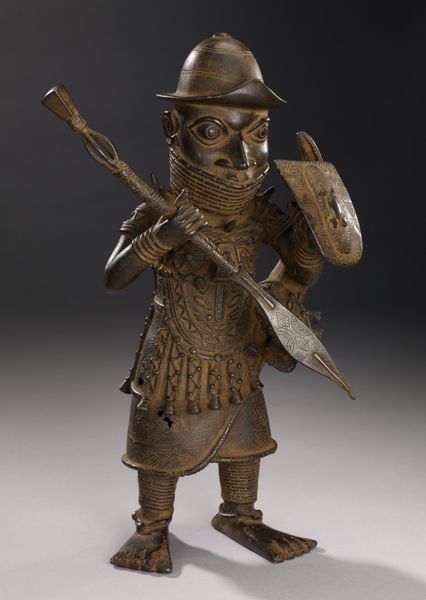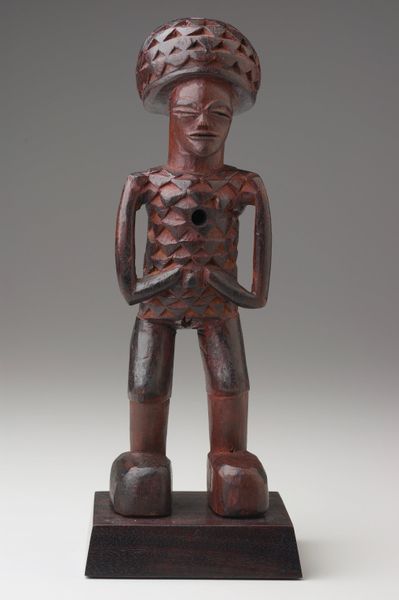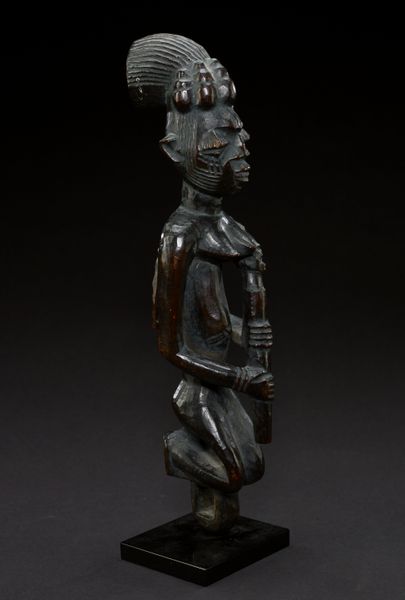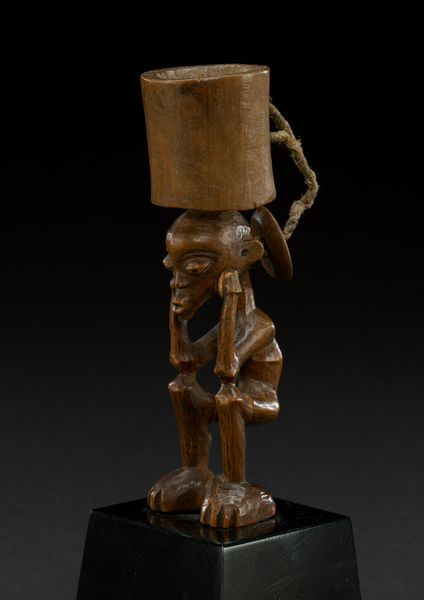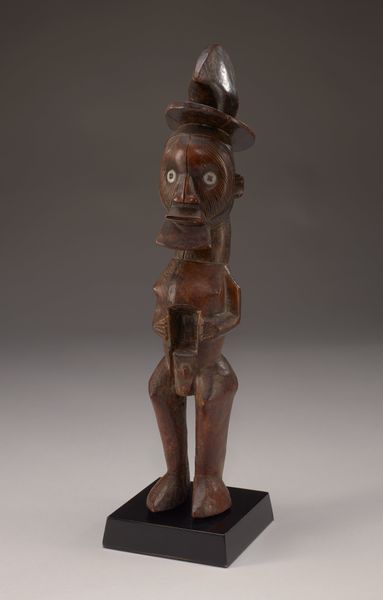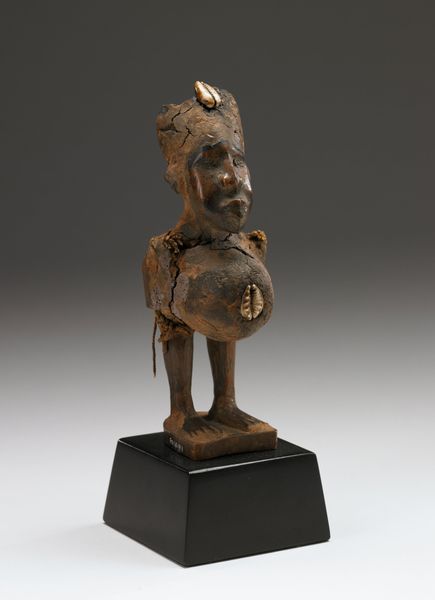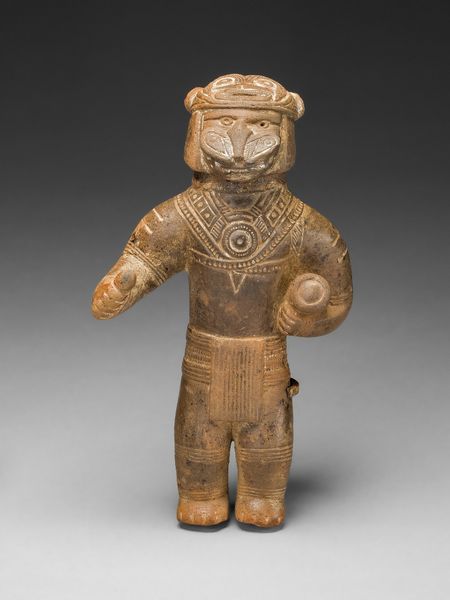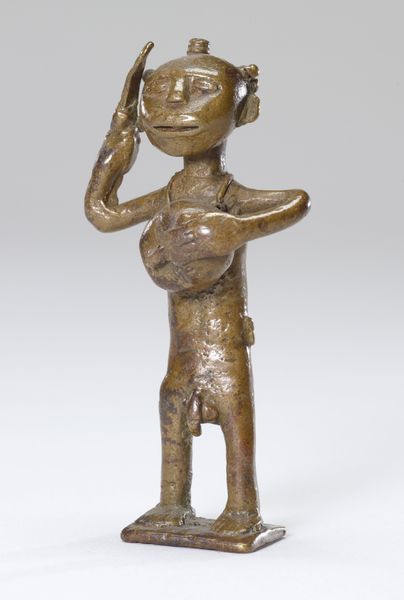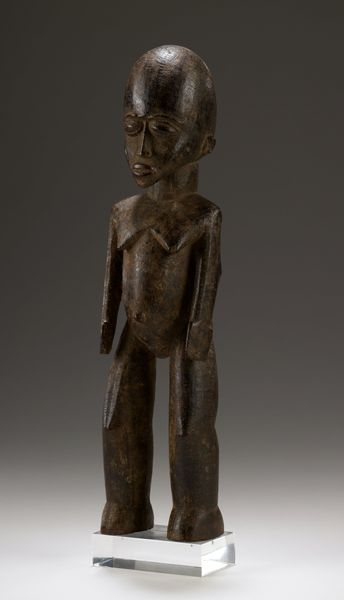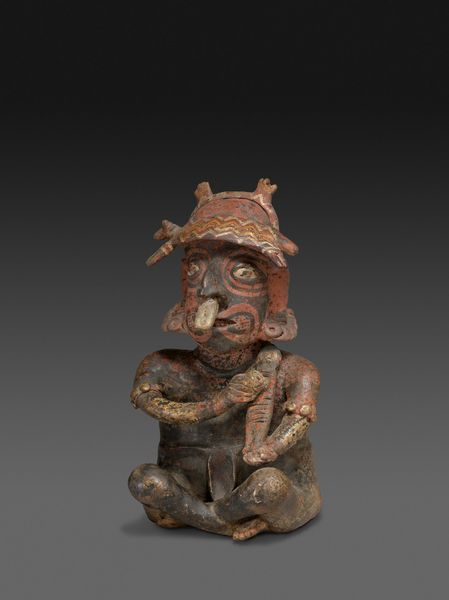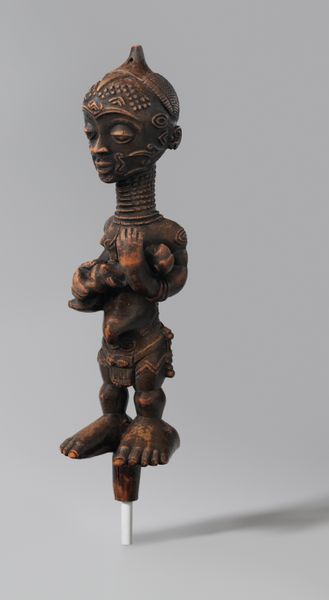
sculpture, wood
#
african-art
#
figuration
#
sculpture
#
wood
Dimensions: 7 5/8 x 2 7/8 x 2 1/8 in. (19.37 x 7.3 x 5.4 cm)
Copyright: Public Domain
Editor: Here we have a wooden sculpture from the early 20th century identified as a Beembe "Ancestor figure". The figure is very striking. It's meticulously carved, yet also feels powerful and quite imposing. What historical narratives can you unpack from this piece? Curator: The sculpture immediately makes me think about the intersection of power, identity, and representation in the colonial context. Consider how this "ancestor figure" carries objects – possibly a knife and a ritual object. These could be understood as symbols of resistance or perhaps as representations of pre-colonial life re-imagined. What do you think of the way its body is adorned? Editor: The carving on the torso looks like armor, which, combined with the knife, evokes a warrior-like quality. Curator: Exactly! And, the whited-out eyes contrast sharply against the dark wood and seem to give the figure an intense gaze. Do you think this has something to do with how colonized societies strategically asserted their own cultural identity in response to Western influences? Editor: I didn't initially connect the sculpture to the pressures of colonization, but that makes total sense now. The detailed craftsmanship, even the imposing stance, could be seen as a visual declaration of cultural strength and pride during a period of intense external pressures. Curator: It can be understood as a reclamation of autonomy and a visual argument for the continued significance and validity of indigenous practices. It underscores how colonized communities used art not just to remember but also to actively reshape and redefine their identities amidst the disruptions of colonization. What’s your takeaway here? Editor: I am appreciating art history now as an invitation to engage in a broader discussion of cultural resilience and historical memory. It has much deeper implications and messages than just aesthetics. Curator: Absolutely! Approaching art with that awareness opens pathways for empathy and critical thought.
Comments
minneapolisinstituteofart about 2 years ago
⋮
The knife and bottle (imported from Europe) are indications of authority, suggesting that this ancestor figure represents a high-ranking man, most likely a chief. The large feet—note the detailed toes—symbolize stability, while the small shards of white porcelain used for the eyes enhance the figure’s visionary power. Its true power, however, was hidden: the life force of the ancestor, imbued into the figure by inserting tiny remains of his corpse into a cavity near the rectum.
Join the conversation
Join millions of artists and users on Artera today and experience the ultimate creative platform.
